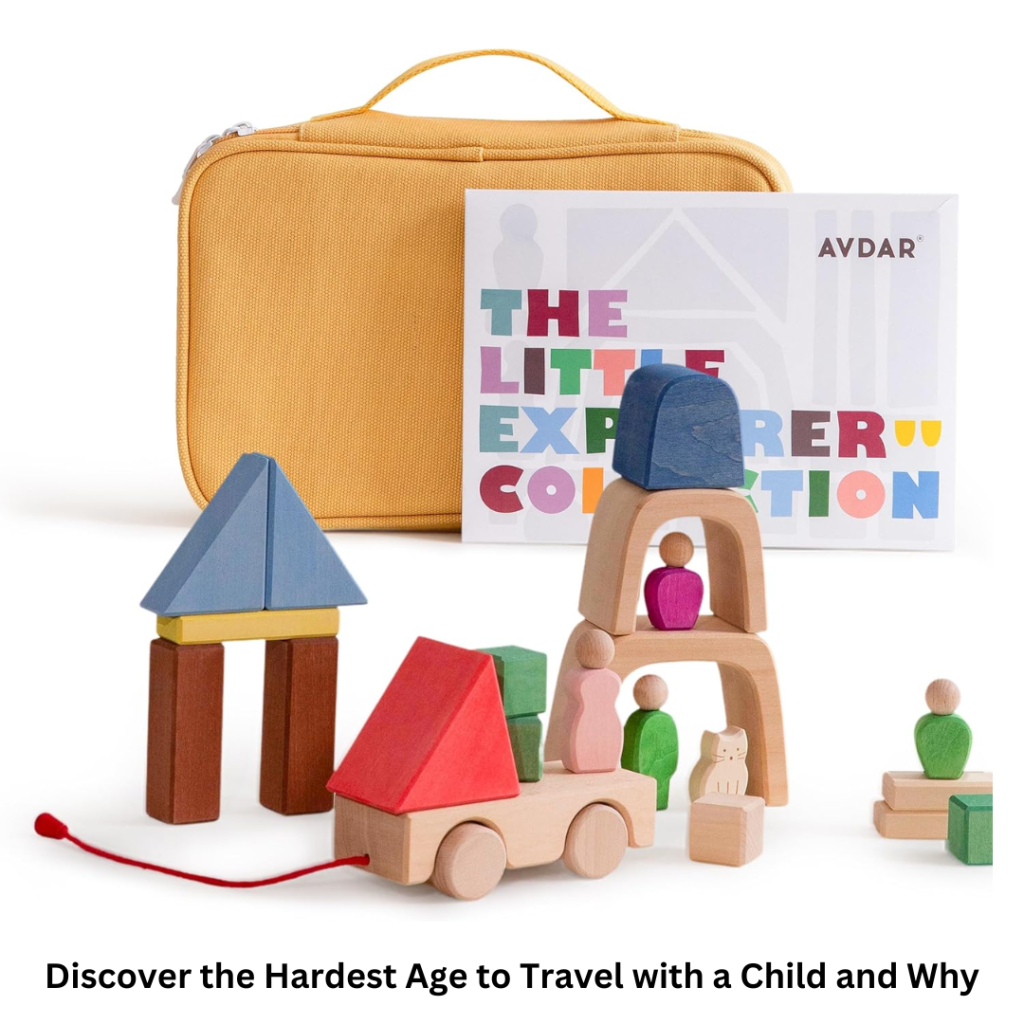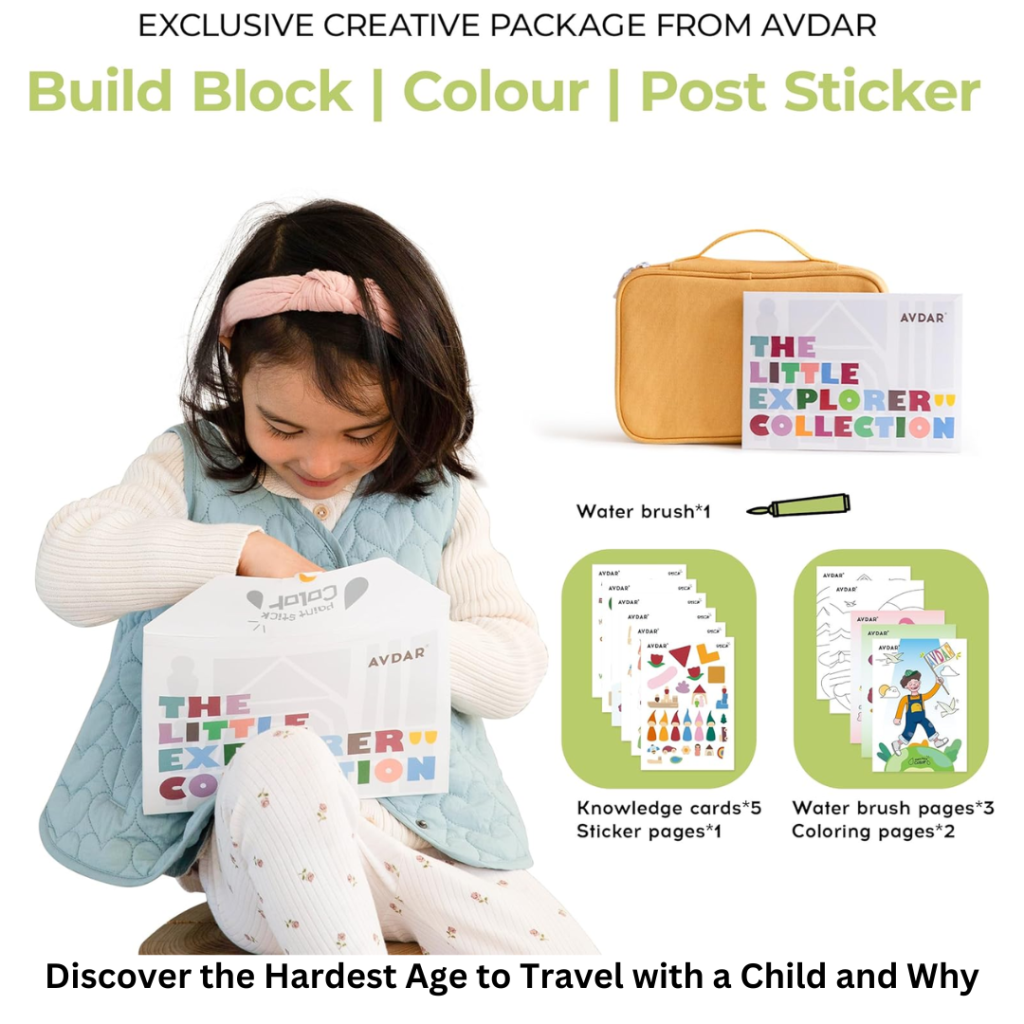Imagine this: You’re finally on that long-awaited family trip, but your toddler is screaming, your baby won’t sleep, or your preteen is rolling their eyes at every suggestion. Sound familiar? Traveling with kids can feel like navigating a minefield—some stages are manageable, while others are downright exhausting.
Every parent knows that traveling with children is rarely smooth sailing. From tantrums to meltdowns and the constant need for entertainment, it’s hard to predict what challenges you’ll face. The truth is, the difficulty depends a lot on your child’s age, and every age brings its own set of surprises.
But here’s the good news: this blog breaks it all down for you. By the end, you’ll understand which ages are the most challenging, why they’re tough, and how to make traveling with your child easier—no matter their age.
So, whether you’re a new parent planning your first trip or a seasoned traveler wondering why this trip feels harder than the last, keep reading. Let’s explore the ups and downs of traveling with kids and uncover how to make every journey more enjoyable.
The Challenges of Traveling with Kids: A Look at Each Age Group
Every age comes with its own travel hurdles. What makes a trip challenging with one child may feel like a breeze with another, depending on where they are in their development. Let’s dive into the ups and downs of traveling with kids at different stages of life.
Infants (0–12 Months)
Traveling with a baby can be both manageable and unpredictable. On the bright side, infants are immobile and tend to sleep frequently, which means you may get some quiet moments during the trip. But there’s a flip side: their schedules revolve around feeding, diaper changes, and naps. Sudden cries in the middle of a flight or ear pressure during takeoff can also add stress.
Toddlers (1–3 Years)
This is the stage where curiosity peaks—and patience often runs thin. Toddlers are learning and exploring, which can make travel exciting. They start to understand simple instructions, making it a bit easier to communicate. However, tantrums and short attention spans can turn even a short trip into a marathon. Sitting still for long periods? That’s rarely on their agenda.
Preschoolers (3–5 Years)
Preschoolers bring a mix of energy and growing independence. They can express themselves better and may even get excited about the journey itself. But their active nature still requires you to keep them entertained. If boredom sets in, you’ll quickly know about it.
School-Age Kids (6–10 Years)
At this age, children are more self-sufficient, and they’re usually better at following directions. Long flights or road trips might not be as stressful, as they can stay occupied with books, games, or screens. That said, the challenge lies in keeping them engaged. Boredom can strike when the novelty wears off, and over-reliance on screens may lead to restlessness.
Preteens and Teens (11+ Years)
Older kids tend to be the easiest travelers in terms of independence. They can pack their own bags, entertain themselves, and often enjoy exploring new places. But don’t expect total cooperation—mood swings and a lack of interest in family activities can make them hard to please.
Every age has its ups and downs when it comes to traveling. The key is understanding what your child needs most at their stage and planning ahead to handle those moments when things don’t go as planned.

Why Some Ages Are Harder to Travel With
Not all travel struggles are created equal. What makes an age particularly tough depends on several factors—some tied to the child’s development and others to the challenges parents face. Let’s break it down.
Developmental Milestones
The first few years are packed with milestones. A baby who has just learned to crawl or walk won’t sit still for long. Toddlers are learning to assert independence, and they often resist being confined. As children grow, their physical and emotional needs evolve, which can create new hurdles on the go.
Emotional Challenges
Young children often experience separation anxiety, making it difficult for them to adjust to unfamiliar settings. Tantrums and meltdowns are common, especially in toddlers who can’t yet express themselves fully. Even older kids may develop new fears—whether it’s a plane ride or a crowded place—that catch parents off guard.
Parental Stress
Let’s be honest: parenting on the road is no vacation. Parents often juggle multiple needs at once, from ensuring a child’s comfort to managing their own exhaustion. Patience is tested when routines are disrupted, sleep is lacking, or unexpected issues arise mid-trip.
Understanding these factors can help you prepare for the challenges ahead. With a little planning and flexibility, even the hardest ages can feel a bit easier to navigate.
What the Experts and Parents Say
When it comes to traveling with kids, the real wisdom often comes from those who’ve lived through it—or studied it. Experts and experienced parents have plenty to share about what makes some ages harder (or surprisingly easier) when on the go.
Dr. Emily Carter, a pediatrician, explains, “Toddlers are at a tricky stage because they’re mobile and curious but lack the ability to self-regulate. This combination can lead to tantrums in confined spaces like planes.” She also notes that planning around nap times and meal schedules can help minimize meltdowns.
On the other hand, seasoned mom of three, Rachel Adams, recalls a different kind of challenge with her preteen. “When my daughter was 11, she didn’t want to participate in family activities during our trip. She spent most of the time on her phone, which made it hard to connect as a family.”
Child psychologist Dr. Mia Greene adds, “Preschoolers can be surprisingly adaptable because they enjoy new experiences, but they also need structure. Keeping a consistent routine—like regular meal and sleep times—can reduce stress for both parents and kids.”
One dad, Marcus, shares his experience traveling with an infant. “When my son was six months old, it was actually easier than I expected. He slept most of the flight. But as soon as he turned two, he wanted to explore everything and wouldn’t stay in his seat.”
These insights highlight one thing: there’s no one-size-fits-all answer to the “hardest” age. Every child is different, and each stage comes with its own set of surprises. But by listening to the advice of those who’ve been there, you can prepare for whatever challenges your next trip may bring.
When Is Traveling with Kids Easiest?
While every stage of childhood has its challenges, some ages make traveling more manageable. Understanding when these easier phases happen can help you plan trips that are less stressful and more enjoyable.
Under 6 Months: The Sweet Spot for Babies
Surprisingly, traveling with a baby under six months can be easier than expected. At this stage, babies are immobile and often sleep for long stretches, especially when lulled by the motion of a plane or car. For breastfeeding mothers, feeding is convenient, and you won’t need to carry as much food or snacks. However, you’ll still need to manage diapers and pack light but smart.
Older Kids (5+ Years): Independence Makes a Difference
Children over the age of five tend to be more independent, which can make traveling smoother. They’re better at following instructions and adapting to new environments. Many kids at this age are also excited about the idea of traveling, making them easier to engage with activities or sightseeing. With the right preparation, they can even carry their own small bags or help out in simple ways.
While there’s no “perfect” age for travel, these phases are often the most manageable. Knowing when kids are likely to be more adaptable can make your family adventures feel a little less chaotic and a lot more fun.
Tips for Traveling with Kids of Any Age
No matter how old your child is, preparation is the key to a smoother trip. A little planning can make a big difference when you’re on the go. Here are some tried-and-true tips to help parents handle travel at any stage.
Pack Smart for Their Age
Every age group has unique needs, so pack accordingly. For infants, bring plenty of diapers, wipes, and extra clothes. Toddlers often need favorite toys, snacks, and a comfort item like a blanket. Older kids will appreciate things like books, games, or headphones. Keep essentials within easy reach, especially during flights or long car rides.
Be Ready for Meltdowns
Meltdowns can happen at any age. The key is staying calm and having strategies in place. Distractions work wonders—pack small toys, puzzles, or even a new activity they haven’t seen before. Snacks are another lifesaver when patience runs low. For older kids, let them have a say in activities or meals to reduce frustration.
Plan Around Developmental Needs
Understand what your child needs most based on their age. Babies and toddlers will need naps, so plan travel times around their sleep schedules whenever possible. Preschoolers and younger kids might need breaks to burn off energy—look for parks or play areas. Sensory items like noise-canceling headphones or chew toys can help children who are sensitive to their surroundings.
Traveling with kids isn’t always easy, but with the right tools and mindset, it can still be enjoyable. By being prepared and staying flexible, you can create great memories together, no matter their age.

Understanding the Hardest and Easiest Ages: A Deeper Dive
Every parent wonders at some point, what is the hardest age to go through? While the answer depends on many factors, travel can amplify the challenges of certain developmental stages.
What Is the Hardest Age to Go Through While Traveling?
Many parents find that toddlerhood (ages 1–3) is the hardest stage to travel through. This is when independence starts to emerge, often clashing with limits set by parents. Add the confined spaces of a plane or long car rides, and meltdowns are almost inevitable. Toddlers thrive on routine, which is often disrupted during travel, making this phase especially tricky.
What Age Is the Hardest with a Toddler?
Two-year-olds, often referred to as being in the “terrible twos,” are infamous for their tantrums and short attention spans. At this age, traveling means constant entertainment and patience from parents. They’re too young to fully understand instructions but old enough to express frustration loudly.
What Is the Hardest Age for a Kid?
Looking beyond toddlers, different ages bring different difficulties. Preschoolers may struggle with boredom or overstimulation, while preteens might resist family activities altogether. The “hardest” age depends on the situation. However, younger kids tend to need more hands-on attention, while older kids might present emotional or social challenges.
What Age Is Easiest to Travel with a Baby?
In contrast, traveling with a baby under six months is often considered one of the easiest times. Babies in this age range are usually immobile and spend much of their day sleeping. They may cry occasionally, but with proper planning—like feeding during takeoff or landing to help with ear pressure—many parents find this stage far less stressful than the toddler years.
By understanding the unique challenges of each age and weaving in these LSI keyword insights, parents can better prepare for their journeys and feel confident at every stage of their child’s growth.
Adding Unique Touches to Enhance the Experience
Every family’s travel journey is different, but adding thoughtful and engaging elements to this topic can help bring it to life. These unique touches not only make the information relatable but also encourage readers to reflect on their own experiences.
Research-Based Insights
Studies on child development and travel psychology can offer valuable context. For example, research shows that toddlers often struggle with transitions and unfamiliar settings, which can make traveling with them particularly challenging. Including data like this helps parents feel validated and better prepared.
Interactive Features
Why not involve readers directly? Adding a poll like, “What age do you find the hardest to travel with your child?” makes the article engaging. Quizzes can also be fun—something like, “Are you ready to travel with a toddler?” allows readers to test their knowledge and feel more involved.
Visual Aids
Infographics or simple charts can break down complex ideas visually. For example, a chart comparing age groups, their common travel challenges, and easy solutions provides a quick reference for busy parents. Visual aids make the information easier to digest and more appealing to skim-readers.
Personal Stories
Parents love hearing from others who’ve been in their shoes. Sharing real-life anecdotes—like the time a toddler insisted on walking through an airport or when a teenager refused to leave their phone behind—adds a human touch. Invite readers to comment with their own travel tales, creating a space for shared experiences and advice.
By combining factual insights, interactive elements, visuals, and personal connections, this section ensures readers feel informed and engaged while also making the article stand out.

Clark Lubowitz is a parenting expert with over 10 years of experience in toddler care and child development. Holding a degree in Early Childhood Education, he specializes in blending modern technology with parenting, offering expert advice on the best toddler gadgets. Through his work on ToddlerAwesome.com, Clark provides valuable insights to help parents make informed decisions for their little ones.
